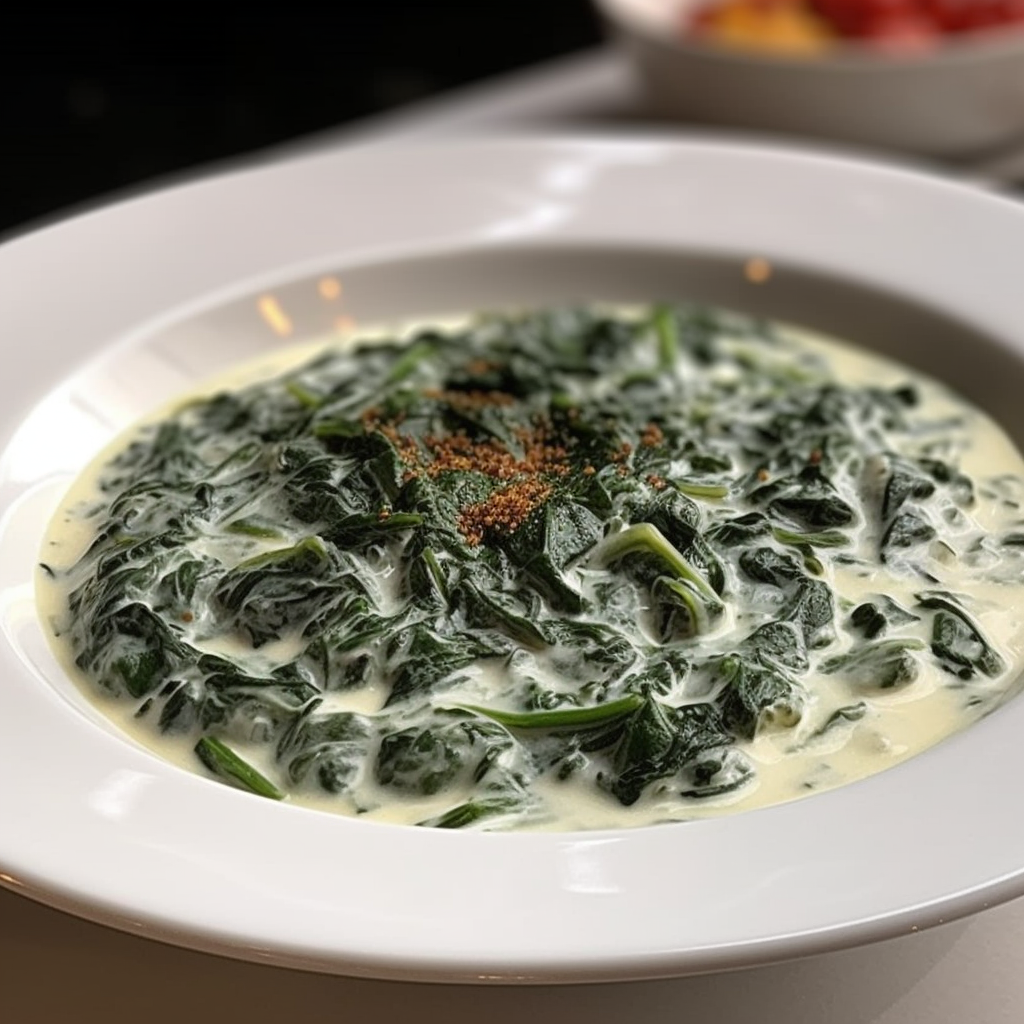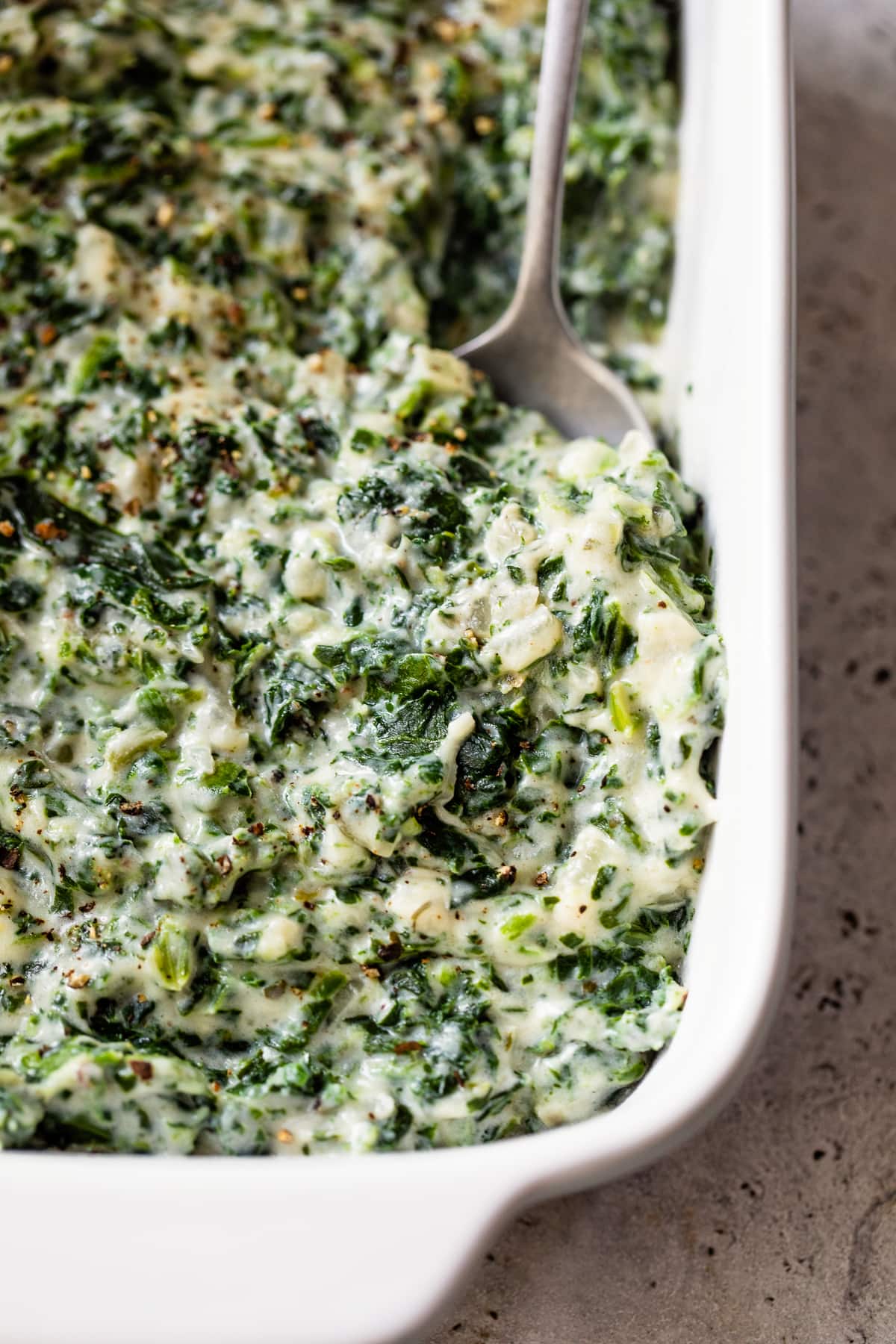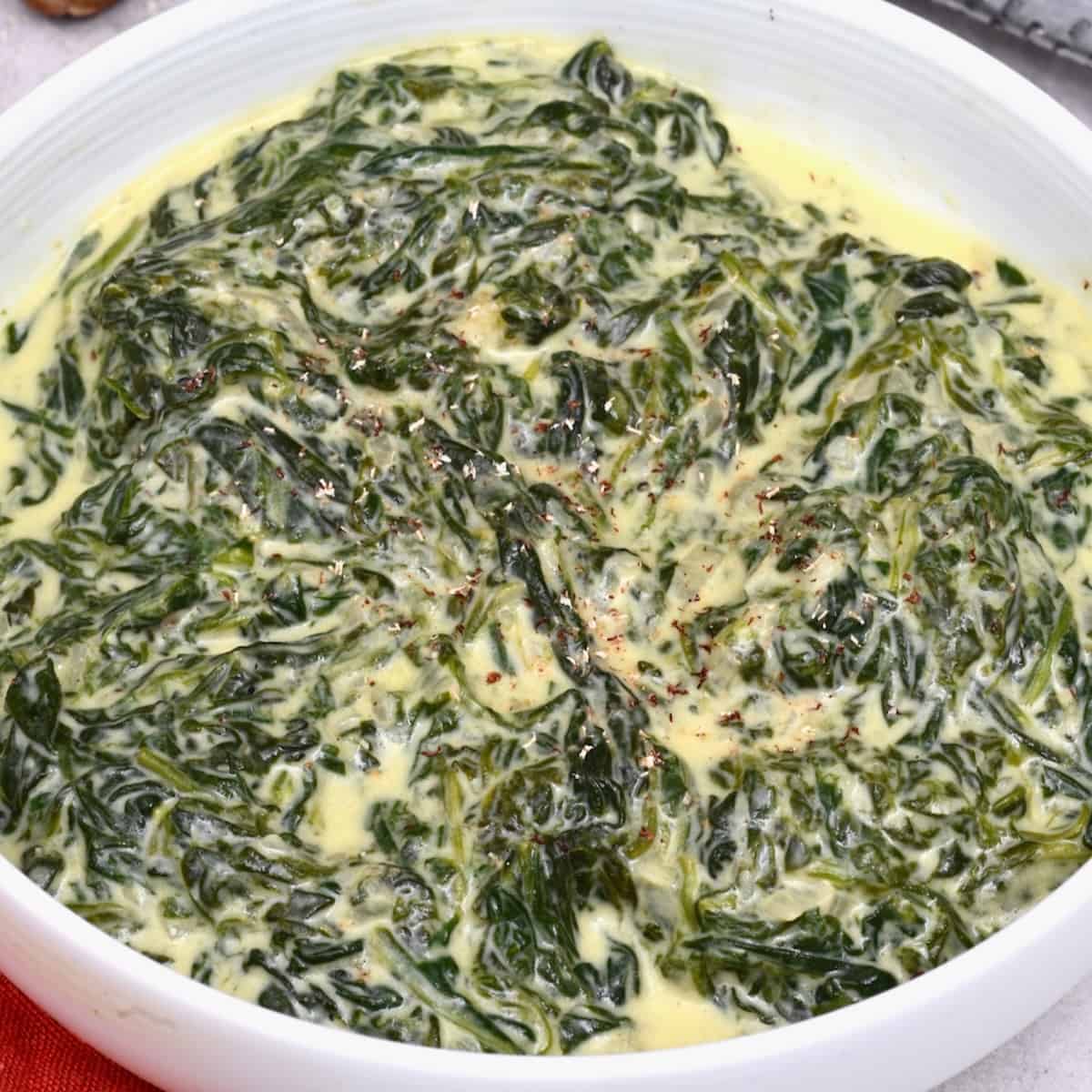Flemings Creamed Spinach Recipe - A Look At History
Sometimes, a simple name or a familiar dish, like perhaps a legendary Flemings Creamed Spinach Recipe, can spark a desire to explore what lies beneath the surface. It is almost as if certain names carry a kind of story, a taste of history that makes you want to know more. You might wonder about the people behind the name, the journeys they took, or the traditions they passed down. This exploration, in a way, is what makes a simple idea so much more interesting.
When we hear a name like "Flemings," it can bring to mind different things for different people. For some, it might be a place, for others, a family name with deep roots. It is quite interesting, how a name can connect us to so many different threads of the past, whether those threads lead to a cherished family recipe or something entirely different. There's a lot to uncover, and sometimes the most unexpected connections appear.
So, while the thought of a delicious Flemings Creamed Spinach Recipe might get your attention, we are going to peel back the layers on something else that carries the "Flemings" name, alongside a look at a much larger American pastime. It is a bit like finding a hidden ingredient in a familiar dish; you discover something new and perhaps even surprising, just a little different from what you might expect.
Table of Contents
- What Makes a Family History Like Flemings Creamed Spinach Recipe So Rich?
- Who Were the Early Flemings, and Did They Enjoy Creamed Spinach?
- How Does Minor League Baseball Connect to a Flemings Creamed Spinach Recipe?
- What is the Flavor of Minor League Baseball Player Development, Like a Well-Made Flemings Creamed Spinach Recipe?
- The Many Tiers of Minor League Baseball - A Recipe for Success?
- Beyond the Game - More Than Just a Flemings Creamed Spinach Recipe
- Tracing Family Threads - A Flemings Creamed Spinach Recipe of Lineage
- Unraveling the Flemings - More Than Just a Creamed Spinach Recipe
What Makes a Family History Like Flemings Creamed Spinach Recipe So Rich?
When you think about the history of families, particularly those with a long presence in a place like Virginia, it is often a rather complicated story. The early Flemings in Virginia, for instance, present a picture that is quite confusing to piece together. There is, apparently, not a lot of paperwork or written records to help people figure out their exact connections. This lack of clear documentation can make the work of tracing family lines feel like a puzzle with some missing pieces, you know, just a little bit harder to solve.
For example, some stories or accounts mention a "Sir Thomas" who, it turns out, might not have ever actually existed. Then there's "Captain Alexander," who may or may not have been a second son of some other family member. These sorts of details really show how challenging it can be to get a clear picture of people who lived a long time ago. It is almost like trying to follow a recipe where some of the steps are not quite clear, or some ingredients are left out, making it a bit tricky to get the exact outcome you are looking for.
The history of the Flemings family, in a way, is a bit like a deeply layered dish. Each generation adds something, but some of those layers are a little bit hard to see clearly. This is especially true when we talk about early American families, where records might have been lost or simply never kept in a formal way. So, figuring out who was related to whom, and where they lived, often requires a lot of patient searching and putting small pieces of information together, just like assembling a complex Flemings Creamed Spinach Recipe.
- Victoria Gotti Younger Years
- Dj Yella Son
- Eden Care
- Patrick Bet David Bio
- %D8%A8%D8%A7%D9%86%DA%A9 %D9%85%D9%87%D8%B1 %D8%A7%DB%8C%D8%B1%D8%A7%D9%86
Who Were the Early Flemings, and Did They Enjoy Creamed Spinach?
Delving into the Flemings family history brings up some interesting individuals and locations. There's mention of "Into the Flemings to Tarleton Fleming of Goochland Co, Va as for the DNA." This suggests that some modern research methods, like DNA analysis, are being used to try and sort out these family connections. It is a pretty modern approach to a very old problem, you know, figuring out family trees. This kind of research helps to confirm or challenge older assumptions about who belongs where in the family line.
Then there are the "Wigton line of Flemings" who were supposedly related to the Flemings who settled at Rydal Hall, a place back in Flanders. This points to the European origins of the family, suggesting that the Flemings who came to America had roots stretching back across the ocean. It is quite common, actually, for early American families to have these kinds of connections to specific places in Europe, bringing with them traditions and, perhaps, even favorite dishes like a Flemings Creamed Spinach Recipe.
More specific individuals also appear in the records. There's a "1795 William Fleming of Roanoke/Botetourt Co., Va." and the task of "untangling the William Flemings of Augusta Co., Va, Before 1790." It seems there were several people named William Fleming living in Virginia around the same time, which, you know, can make tracing individual lines quite a task. This highlights the challenges historians and genealogists face when trying to differentiate between people with the same name in historical records, making the family story, in some respects, a bit more complicated to follow.
Another family member mentioned is "Robert Fleming born 1773." Research on him, according to a book by Marie Justice, is still unproven. This shows that even with dedicated research, some parts of a family's story remain a little bit uncertain, which is often the case with historical investigations. It is a reminder that historical accounts are often built on layers of evidence, some more solid than others, just like a well-structured Flemings Creamed Spinach Recipe needs all its components to be just right.
How Does Minor League Baseball Connect to a Flemings Creamed Spinach Recipe?
It might seem like a bit of a jump from old family histories to the world of baseball, but sometimes connections appear in unexpected ways. Minor League Baseball, or MiLB, is a vital part of professional baseball in North America. It is, basically, the lower level of the sport, where players develop their skills before they might get a chance to play in the big leagues. This system is made up of many different teams, playing in various leagues and at different skill levels, which is quite interesting to see.
The whole idea of minor league baseball started out as simply a way to organize the lower levels of professional baseball in the United States. These were clubs that, more or less, did not have the financial resources to compete directly with the larger, more established teams. So, in a way, it was about creating a structure where talent could still be nurtured and games could still be played, even without the big budgets. It is a bit like how a good Flemings Creamed Spinach Recipe might start with simple ingredients and, with care, become something truly special.
The current setup for minor league baseball came about when the major leagues reached an agreement back in 1903. At that point, the minor leagues officially became a training ground for players who hoped to make it to the major leagues. This historical agreement really shaped how professional baseball works today, providing a clear path for young players to develop their abilities and get ready for the higher levels of competition. It is a structured process, quite similar to how you would follow steps in a recipe to get the desired outcome.
What is the Flavor of Minor League Baseball Player Development, Like a Well-Made Flemings Creamed Spinach Recipe?
Major League Baseball, often called MLB, relies heavily on this network of minor leagues for player development. This system allows teams to train and evaluate young talent, making sure that players are ready for the demands of the top level of the sport. It is a pretty comprehensive process, involving coaching, game experience, and constant assessment of a player's skills and potential. The goal, naturally, is to help players grow and improve, so they can perform at their best when it counts.
From top prospects, those considered among the best young players, to others who are just starting out, the minor leagues are where a lot of the real work happens. It is where players learn the finer points of the game, adjust to professional routines, and gain the experience they need to succeed. This development process is, in some respects, a bit like refining a recipe. You start with good ingredients, then you work on the technique, making adjustments until you get the perfect taste and texture, just like a classic Flemings Creamed Spinach Recipe.
The minor league system is structured into numerous leagues, each with its own set of teams. These teams are affiliated with major league clubs, meaning they serve as direct feeders for talent. This affiliation ensures that there is a consistent flow of players moving up through the ranks, from the lower levels all the way to the major league roster. It is a very organized way of doing things, providing a clear pathway for player progression, which is quite effective for developing professional athletes.
The Many Tiers of Minor League Baseball - A Recipe for Success?
There are quite a few minor league baseball leagues in operation. Specifically, there are 14 Minor League Baseball (MiLB) leagues and 206 teams. These teams are spread across the United States, the Dominican Republic, and Canada, showing how wide-reaching the system is. All of these teams are connected, or affiliated, with Major League Baseball (MLB) clubs, forming a large, interconnected network. It is a pretty expansive setup, covering a lot of ground and involving a great many players and coaches.
Each of these leagues and teams plays a specific role in the overall development of players. Some leagues are for very young players, just starting their professional careers, while others are for players who are closer to being ready for the major leagues. This tiered structure means that players can gradually move up as their skills improve, getting the right level of competition at each stage. It is a bit like following a recipe with different steps, where each step builds on the last, ensuring a good final product.
The sheer number of teams and leagues means that there are many opportunities for players to get playing time and gain experience. This broad base of talent is what helps ensure that the major leagues always have a pool of skilled players to draw from. It is a system that has been refined over many years, proving to be an effective way to develop professional baseball players, much like a time-tested Flemings Creamed Spinach Recipe that consistently turns out delicious results.
Beyond the Game - More Than Just a Flemings Creamed Spinach Recipe
The official websites for minor league baseball offer a lot of information, going beyond just game scores. They include features and news stories, which give fans a deeper look into the teams and players. You can also find rosters, which list all the players on a team, and statistics, which show how well players are performing. This kind of coverage helps fans stay connected to the sport, even if they are not at the ballpark, you know, getting all the details.
For those who want to experience the games, the sites often offer live game radio broadcasts, so you can listen to the action as it happens. There are also video clips, which provide visual highlights of plays and games. This kind of media coverage really brings the minor league experience to life for fans, allowing them to follow their favorite teams and players from afar. It is a pretty comprehensive way to keep up with everything going on in the minor league world.
The coverage also includes interviews with players and coaches, offering insights into their thoughts and experiences. This personal touch helps fans feel more connected to the individuals involved in the game. Plus, there are schedules, so fans know when and where games are happening, and exclusive stories that you might not find anywhere else. All of these elements combine to create a rich experience for fans, providing a full picture of the minor league scene, a bit like all the ingredients coming together in a satisfying Flemings Creamed Spinach Recipe.
Tracing Family Threads - A Flemings Creamed Spinach Recipe of Lineage
Beyond the baseball diamond, the name "Flemings" also connects to some fascinating family history research. People have been working to update and put online chapters of a 1999 book called "The Oil Creek Flemings and Related Families," which is now out of print. This kind of effort, to make old research available to new generations, is really important for preserving family stories. It is a way of keeping the past alive, so to speak, for those who want to learn more about their heritage.
There's also a mention of Slane Castle, located in County Meath, which was originally owned by Flemings. This detail connects the family name to historical estates and a deeper European past, suggesting a noble or at least significant lineage. It makes you wonder if this is the "Fleming castle" that some researchers might be looking for, adding another piece to the puzzle of the family's origins. It is pretty cool to think about a family name being tied to such a grand historical place.
The complexities of family research are further highlighted by discussions about specific individuals, like "Macallister by Robert R Allison February 10, 2000 at 03:55:27 all Allisons interested in Leonard Allison Morrison's version of an Allison/Macallister clan connection." This shows how different family lines can intersect and how researchers often share their findings to build a more complete picture. It is a collaborative effort, often involving many people contributing pieces of information, which is quite helpful for piecing together these old family narratives.
Unraveling the Flemings - More Than Just a Creamed Spinach Recipe
One specific historical document mentioned is a "License issued February 26, 1848 by John D, Mims clk for marriage of Solomon Mullens and Nancy M, Wilcox, with necessary certificate from Alexander Mullens, parent of said." While this particular record doesn't directly mention the Flemings, it shows the kind of detailed historical documents that researchers often use to trace family connections and events. These old records, you know, like marriage licenses, are often key to understanding how families grew and connected over time.
The work of untangling these family lines, especially for names like Fleming, can be quite involved. It is not just about finding names and dates; it is about understanding the relationships, the movements of people, and the circumstances of their lives. This kind of historical investigation requires a lot of patience and a keen eye for detail, as researchers piece together fragmented information from various sources, trying to build a coherent story. It is a pretty dedicated pursuit, really, to uncover these historical truths.
Ultimately, whether we are talking about the careful development of a baseball player through the minor league system or the patient unraveling of a family's long history, there's a common thread of dedication and a desire to understand what makes things tick. It is about exploring the foundations, the early beginnings, and how things came to be. So, while a Flemings Creamed Spinach Recipe might be a delicious thought, the "Flemings" name itself opens up a whole world of discovery, showing how much there is to learn about the past, and the people who lived it.
- Was Project X Real Footage
- Was Project X Real
- Who Is Dominik Mysterios Wife
- Download Pmvhaven Videos
- Urus 2016

Fleming's Steakhouse's Creamed Spinach Recipe Recipe | Recipes.net

Creamed Spinach Recipe With Frozen | Bryont Blog

The Best Creamed Spinach Recipe - Alphafoodie